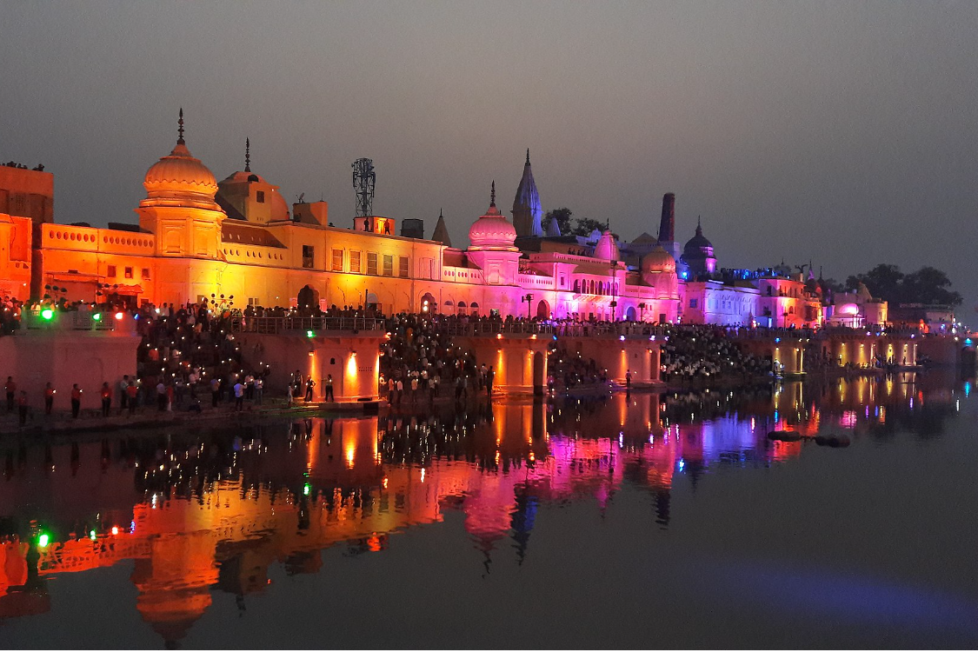Ram Mandir: Ayodhya and reclaiming the civilization ethos


There is enormous excitement about the Bhagwan Ram temple in Sanatanis all over the globe. Why are temples essential in today’s science-focused world? Why is this being considered as a milestone in reclaiming the cultural and religious heritage?
Let us examine the various points in three short articles.
First, about Bhagwan Ram. As well-known researcher Nilesh Oak established, the Ram -Ravana war occurred in 12209 BCE. Thus, it has been part of Hindu cultural and religious identity for nearly 15000 years. Bhagwan Ram, also identified as Maryada Purushottam, is the ideal son, and his period of rule is the ideal that subsequent rulers strive for. Ramayana and worship of Bhagwan Ram is so integrated that a massive number of people use Ram Ram as a greeting. Akhand Ramayana (reading unbroken) is frequently a means of expressing thanks in villages and cities. Ramayana is enacted in the smallest of villages; quoting from Ramayana is normal, and Hanuman Chalisa is usually a child’s first memorized prayer.
Bhagwan Ram is so important and intertwined with Hindu life that the inability to save the temple from destruction made Suryavanshi Kshatriyas, who live around Ayodhya, give up wearing turbans and leather footwear. Now numbering around 150,000, their descendants will wear turbans and leather footwear for the first time since then once the temple is ready. Saraswati Devi, now 85, who had decided to stay silent till the temple was made, will finally, 30 years later, speak for the first time since then. A 64-year-old from Hyderabad is walking 8000 Kilometers to Ayodhya, and we all know of Supreme Court Advocate Mr.Parasaran, who argued the matter for 4 ½ hours standing bare feet. Modiji, now Prime Minister, who was just a member of the BJP agitating for the Mandir in the nineties, had decided not to go to Ayodhya till temple construction started. These are some of the stories we have heard, and perhaps thousands more are there.
Science and Sanatan go hand in hand and do not oppose each other. In Varaha Avatar – the first incarnation of Vishnu- Earth is shown as round, and Hindus recorded time by planetary positions and knew about the speed of planets. A panchang, available everywhere, offers the same data on eclipses and such that NASA does, and the Hindu calendar perfectly blends solar and moon influences. Hindu festivals are based on science.
The presence of temples allowed spiritual solace to a worshipper and was the seat of learning and social upliftment. Traditionally, 70-80% of the revenue of a place was spent on local development, and the temples had a land grant, which enabled them to sustain priests and educators. Most temples had teachers of subjects like math and science besides spiritual learning and offered free food for all. The temples provided jobs during economic hardships and when there were food shortages. These, therefore, were also significant social systems. Even when the Mughals ruled a large part of India as overlords, the presence of many Hindu Rajas ensured that the temple structure survived in most places. Prudent economic management and the focus of priests themselves on spartan lives ensured that the temples had colossal wealth.
India, in such an environment, had developed not only spiritually but also in quality of life. At a time when others were living in deplorable conditions, many in the world did not even have organized agriculture. They lived in primitive conditions and with poor hygiene. Indians achieved a high quality of life with organized systems, hygiene practices, and value systems. The result was also an advanced medical system based on prevention, and even British records describe the various surgeries done in India. Come to think of it, how did Rana Sanga survive 80 wounds?
When the Islamic zealots started attacking India, they were met with steel, and the way of life continued. Bappa Rawal organized a force and chased the attackers away so forcefully that they could not muster the courage to attack for several generations. Later, Raja Suheldev did the same – whose name does not appear in the popular history created by alleged historians. Thus, India survived till the beginning of the second millennium, as per the Christian Calendar, with its value system and infrastructure and continuing to be the wealthiest country. The Rajas may not have been rich, but the general population was well off.
In the following article, Islamic and British occupation and oppression and commencement for reclaiming the heritage.
DISCLAIMER: The author is solely responsible for the views expressed in this article. The author carries the responsibility for citing and/or licensing of images utilized within the text.
